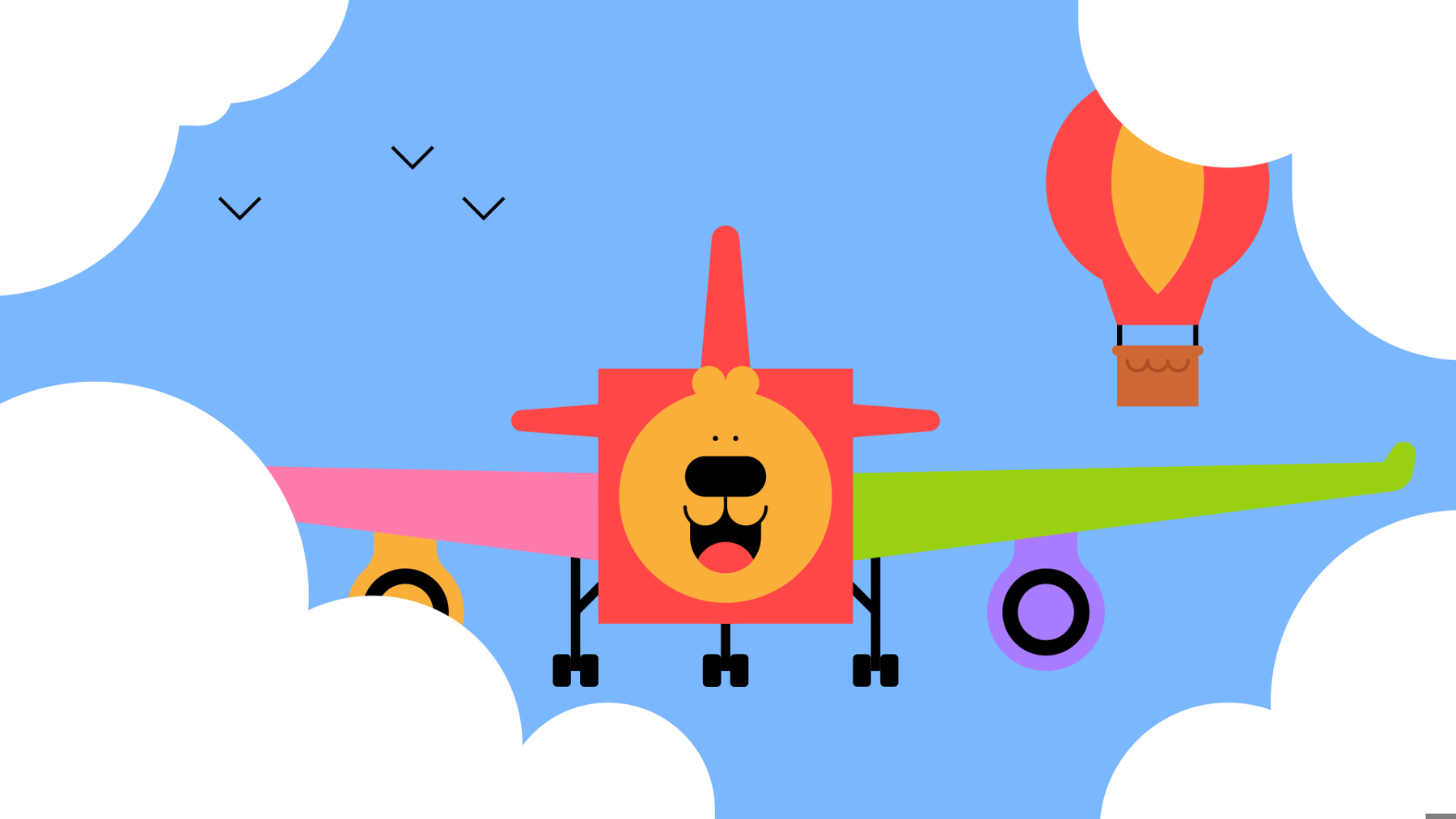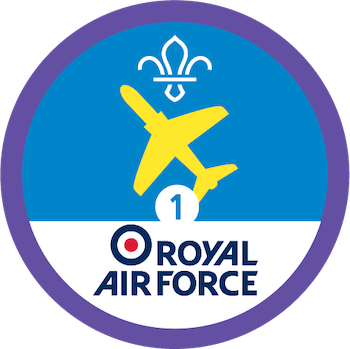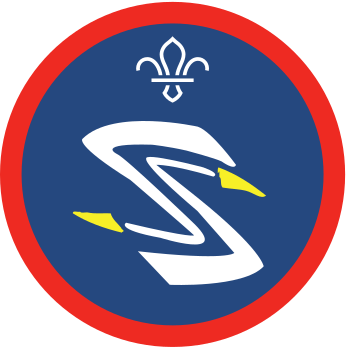
I spy something that flies
You’ll need
- Scissors
- Whiteboard pens
- Sticky tack
- Tables
- Chairs
- Pens or pencils
- A4 whiteboard or scrap paper
- Projector (optional)
- Computer (optional)

Before you begin
- Any sky-gazers working towards their Air Spotter Activity Badge should be informed before you begin that they’ll need to be able to correctly identify 38 out of the 50 aircraft included in this activity. There will be a mix of cargo and people-carrying aircraft and military aircraft, some from the past and some that are still used today.
- For the activity, you’ll need two copies of each of the 50 aircraft images on the ‘Aircraft recognition list and pictures’.
To save paper and printer ink, you could use a projector to display these from a computer. Otherwise, cut these out and stick them up around your meeting place where they’re visible. If you can group the images in clusters of 10, this will be helpful.
- Set up tables and chairs for each group. There should be five or six, depending on numbers. Put a copy of the aircraft list from the ‘Aircraft recognition list and pictures’ on each group’s table, as well as a whiteboard or scrap paper and something to write with.
- On some spare scrap paper, draw a table to keep score, with a column or row for each team, and columns or rows for the 50 aircraft images.
Aircraft discovery
- Explain that everyone will be looking at some images of aircraft and testing their knowledge of the features that help identify them. Allow 10 minutes for everyone to go around and have a look at the images. Have them feedback whether they saw something that they’ve never seen before, or something they recognised. Discuss the types of aircraft, what they’re used for and what cargo they might carry.
Stress that no-one should say any of the names of the aircraft out loud at this stage!
- Split into five groups and give each group 10 images to examine together. In their groups, everyone may now discuss what they think the names of their aircraft are. They should also look at key features like relative size, nose shape, locations of engines, engine types and wing shapes.
- Now, have one person from each group sit at a different table, to form five new teams. Gather the aircraft images or project them somewhere visible to everyone. Explain that you’ll be showing each group one of the images and that they’ll have one minute per image to write down the name of it. Groups should use their aircraft list for reference.
If there’s time, or if your group would prefer not to do the quiz, you could run a game of aircraft snap. Everyone should split into pairs. For each pair, say the name of an aircraft and place two images down in front of them. The pair need to pick up the correct one. Make sure the images are still in the right order, so you can check the answers. Do this for each pair, until all of the images have been used.
- Begin showing the pictures in the order they’re shown on the answer sheet. After each one, give everyone a minute to quietly work out their answers in their groups, write them down on the whiteboard or scrap paper and, when everyone’s ready, hold their answer up.
Group members should take turns holding their answer up. Encourage everyone to work closely together to make sure everyone’s included. Remember, the more brains, the better!
- The person leading the activity, a Young Leader or helper should keep score using the table you drew earlier. Record the answer for each team as you go.
- Continue until you’ve gone through all 50 images. While a Young Leader or helper tots up the scores, redistribute the aircraft images to the groups at their tables. On whiteboards or leftover scrap paper, groups should examine each image and note down the features of the aircraft, including: wing shape, nose shape, colour, markings, engine type/size, propeller/rotors, relative size (small, medium or large will do) and anything else interesting.
- Groups can now take turns to feed back to the rest of the group what they noted down. Ideally, one person should champion one or two aircraft each.
- Announce the results from the image identification quiz and/or aircraft snap.
Reflection
There are so many different aircraft with different purposes that it can be tricky to identify them all. Being able to pick out those tell-tale features and details can be a big help. Which features in particular helped you to correctly identify the aircraft? Was there anything that was similar on all or lots of the aircraft? Were there any clues on your list of aircraft names?
Everyone had to work together closely to get at least 38/50 right. Groups needed their collective brain power to analyse the images, remember familiar details and come up with names that made sense. How did you give everyone a say in what your answer would be for each image? Did you delegate someone to look at the list, someone to look at wings, someone to look at colours/markings and so on, or did you go with the flow? Can you think of another method that might’ve helped you better identify the aircraft? Remember, you can always try this again at home, or in another session.
Safety
All activities must be safely managed. You must complete a thorough risk assessment and take appropriate steps to reduce risk. Use the safety checklist to help you plan and risk assess your activity. Always get approval for the activity, and have suitable supervision and an InTouch process.
- Scissors
Supervise young people appropriately when they’re using scissors. Store all sharp objects securely, out of the reach of young people.
Air-spotting aces might like to do this activity individually or in pairs to demonstrate their knowledge.
- Make your images as large and clear as possible so that everyone can examine them without straining their eyes.
- Don’t bother examining aircraft colours or markings if they aren’t clear, or if not everyone in the group is able to identify colours.
- If anyone’s uncomfortable feeding back information about aircraft features, they could hold up the images that someone else is describing.
All Scout activities should be inclusive and accessible.
A visit to a local airport or airfield might allow the group to see some of the aircraft from the images in action! There’s information in The sky’s the limit activity on how you can do this.
Groups could do preparatory research before this session, and probably should if they’re going for their Air Spotter Activity Badge. Groups could even source the images for the game themselves, if there are particular aircraft that they’re interested in.

